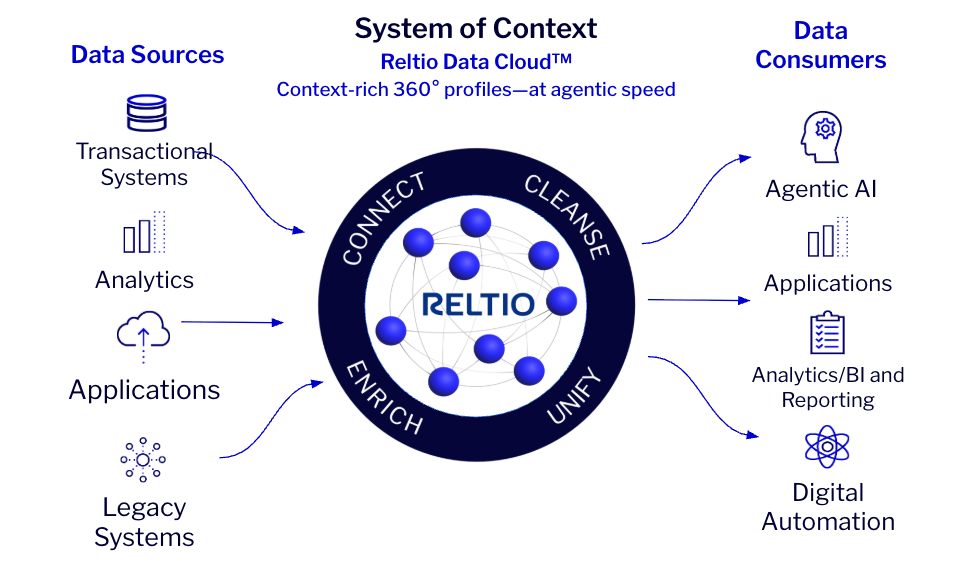Why enterprises need a system of context to keep AI agents from making costly mistakes

Enterprises are racing to deploy AI agents that can make decisions and take actions at machine speed and scale. But when judgment shifts from humans to machines, the margin for error disappears. A single bad data feed isn’t just inconvenient—it can trigger financial, compliance, or reputational damage before anyone has a chance to intervene.
Most enterprise data environments aren’t built for this new reality. Brittle pipelines, batch processing, and siloed systems still dominate. According to Gartner, 63% of organizations either lack or are unsure if they have the right data management practices in place for AI. Gartner also predicted 60% of AI projects unsupported by AI-ready data will be abandoned through 2026.
The challenge is compounded by the way some vendors are increasingly treating data. A large CRM software vendor, for example, recently made moves to “wall off information” inside its ecosystem, prohibiting data sharing with other applications. Other SaaS applications are following the same playbook. While this approach benefits vendors by controlling workflows, it deprives enterprises of the 360-degree view their AI agents need to operate effectively.
The solution isn’t just faster data or more data—it’s building a comprehensive system of context.
What is a system of context?
A system of context is the intelligence layer, built on a semantic data layer. It unifies trusted internal data with external sources and organizes enterprise data by relationships, history, and meaning, ensuring that every downstream AI decision is grounded in a comprehensive understanding of the situation.
For example:
- A customer is not just a record in a CRM; it’s an entity linked to contracts, recent interactions, product usage, and open service requests.
- A supplier is not just a name in a procurement system; it’s tied to active purchase orders, performance ratings, and pending disputes.
A system of context is a continuously updated, multidomain data fabric that provides a comprehensive 360° view of entities (customers, products, suppliers, locations, etc.), enriched with relationships, governance, and lineage.
Unlike systems of record (transactional systems) or systems of engagement (apps like CRM/ERP), a system of context ensures AI agents and workflows always operate with the most relevant, governed, and context-rich data.
With this level of context, AI agents can act with nuance—making accurate recommendations, triggering the right workflows, and avoiding costly mistakes.
The data layer foundation
A system of context can only be built on a strong foundation: the enterprise data layer. This layer unifies, governs, and standardizes data across all domains—customers, products, suppliers, and transactions—so there’s a single, trusted version of the truth available in real-time.
Key capabilities include:
- Continuously updated, trusted 360° views enriched with relationships and history
- A real-time data fabric that eliminates latency from batch jobs
- Integrated governance and lineage for explainable, auditable decisions
- Native MCP connectivity so AI platforms can plug in without custom integration
- Built-in security, access control, and auditability to ensure only authorized agents and applications can act on trusted data
Figure 1: A system of context continuously feeds agents, apps, and analytics with trusted data

Once the enterprise data layer is in place, external intelligence and domain-specific enrichment can be added, providing AI agents with a comprehensive, enterprise-wide perspective.
Why this matters now
Raw data alone won’t prepare you for autonomous decision-making. And data locked inside a single application’s ecosystem will only limit your AI’s potential. A system of context—powered by a semantic enterprise data layer—ensures every AI agent operates from the same, trusted, real-time understanding of your business.
With it, enterprises can:
- Reduce AI risk by ensuring decisions are based on accurate, relevant information.
- Deliver context awareness across the enterprise with accurate data that is enriched with relationships, governance rules, and business meaning.
- Govern AI, ensuring that AI agents acting on the data inherit enterprise-grade policies, security, and compliance guardrails.
Agentic AI moves at the speed of data. Without an enterprise-wide context, that speed can quickly turn into exposure.
Leading enterprises are now investing in a system of context, such as Reltio Data Cloud, to ensure their AI agents act on trusted, real-time intelligent data across the business.
The old rules no longer apply. Read more about the 10 New Rules reshaping enterprise data, along with additional resources to guide your AI journey.









